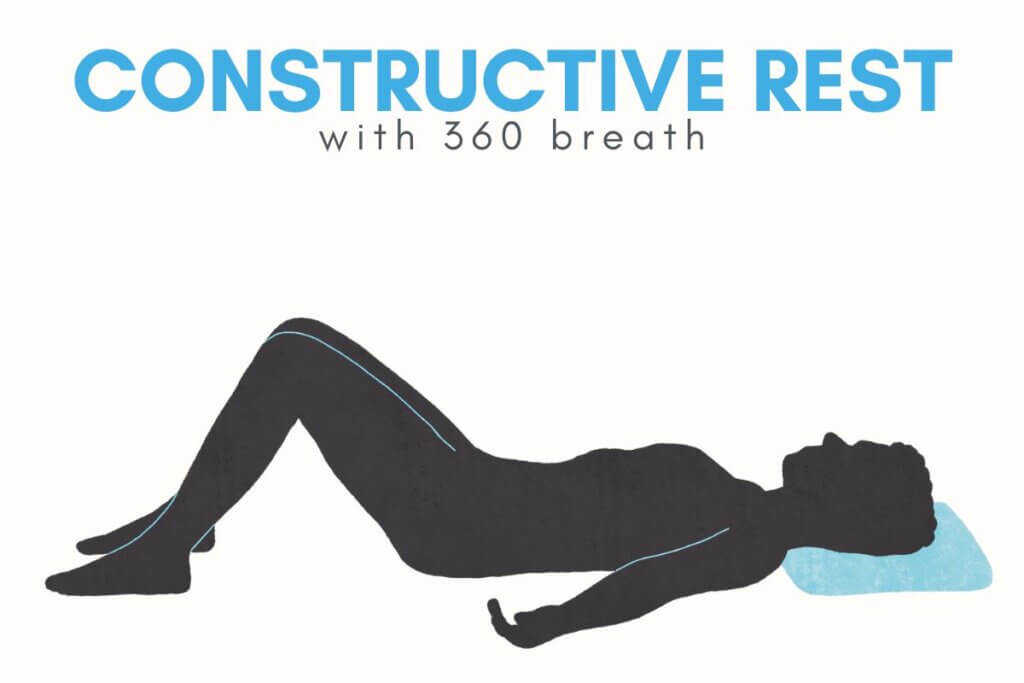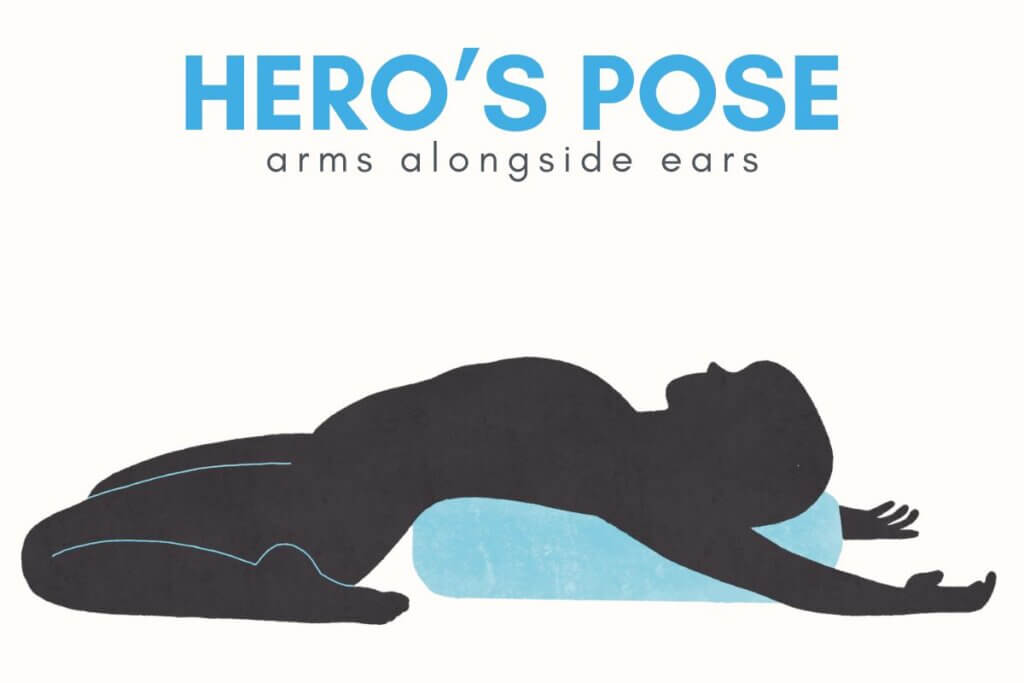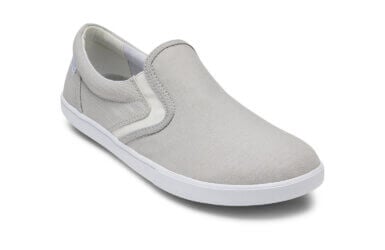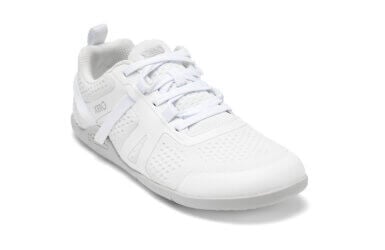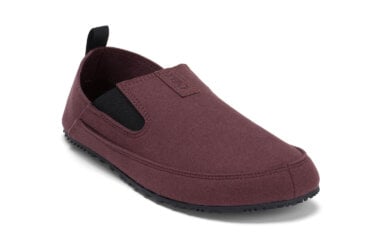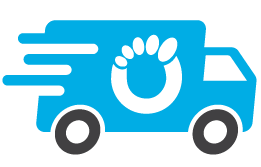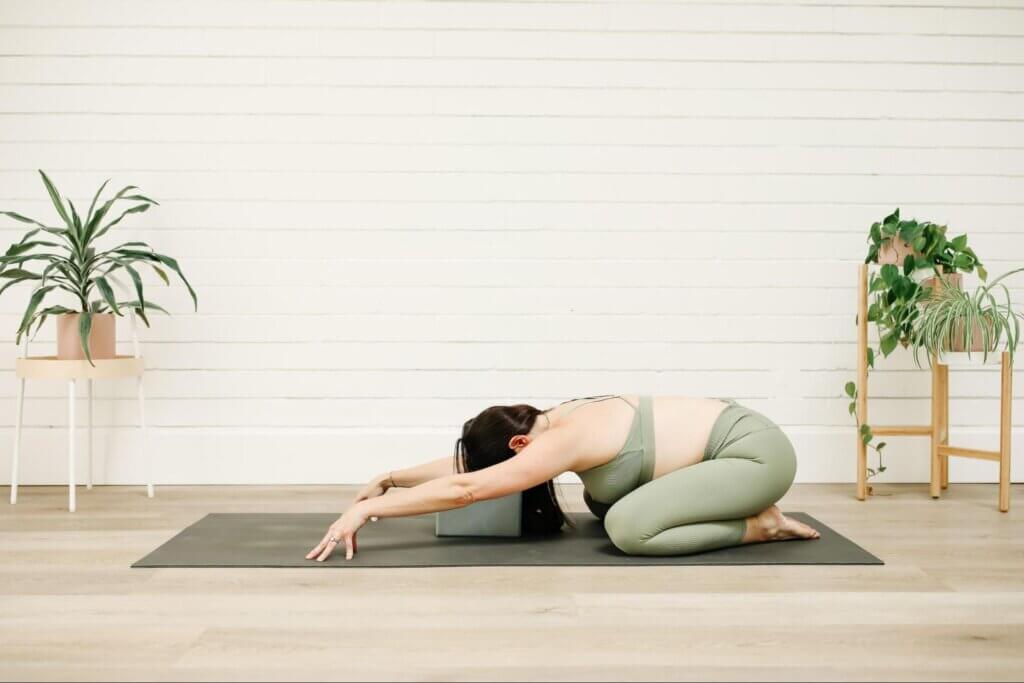
Pregnancy is a beautiful phase of life. It’s a joyful time that is filled with excitement and anticipation. Despite the joy you feel, it can also be an overwhelming time filled with heightened emotions – both positive and negative.
Prenatal yoga helps you manage and prepare the body and mind for birth. It helps manage physical changes happening during pregnancy and makes sure the mind, body, and soul feel strong, healthy, and calm. Beyond the physical benefits of staying fit and relaxed, prenatal yoga may improve your mental health during pregnancy, including anxiety, depression, and stress.
Whether or not you’ve attended a yoga class or tried it at home, prenatal yoga helps women have a powerful and beautiful birth experience. It allows you to focus on yourself and the connection with your baby.
Keep reading to learn more about yoga and the benefits it brings for pregnancy.
Benefits of Prenatal Yoga
Yoga is a gentle form of exercise that benefits pregnant women in several ways.
The physical aspect combined with mindfulness can increase awareness of the body. Studies like this one show mindfulness yoga during pregnancy can decrease the perception of pain during labor, and reduce physical discomfort during pregnancy.
The multitude of physical, mental, social, and emotional benefits can include:
- Slow down mentally and relax through slow and deep breathing, improving the mental state through meditation and mindfulness.
- Tune in to your body on a deeper level.
- Increase the connection to your baby through mantras or touching the belly.
- Trust your intuition to do what feels right to you in the moment.
- Be self-aware of your feelings and recognize intrusive thoughts.
- Develop a sense of community by meeting and practicing with other pregnant moms-to-be.
- Improve sleep, which is not only vital for moms-to-be, but important for their newborn.
- Reduce stress and anxiety during pregnancy.
- Decrease symptoms of nausea.
- Reduce headaches by focusing on poses that stretch and open the neck, shoulders, and upper back.
- Alleviate pregnancy-related aches, pains, or symptoms such as swelling and fatigue. Certain yoga poses can alleviate common aches and pains, including back pain and pelvic pain. Through stretching the muscles during yoga poses, blood flow is significantly improved.
- Some poses can help stimulate digestive organs, which have less space due to your growing baby.
- Prepare your body and muscles needed for labor and delivery.
- Develop a healthier baby. Prenatal yoga makes it less likely to produce offspring that are premature and have low birth weight.
Just remember, it is okay to try prenatal yoga as long as your doctor says it’s okay to stay physically active during your pregnancy.
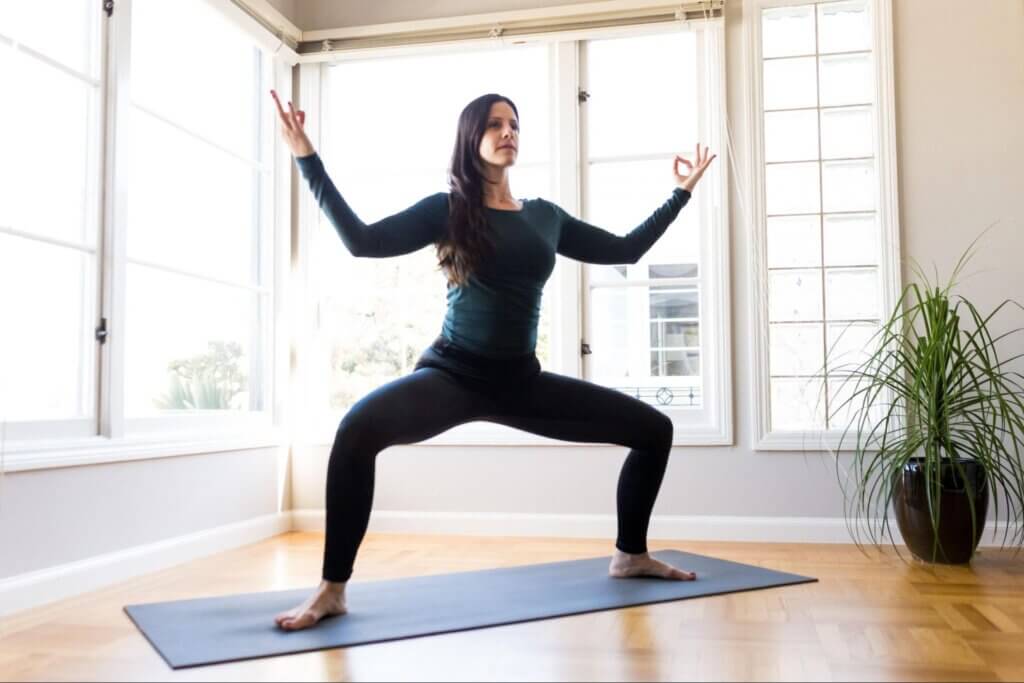
What Can a Yoga Instructor Help With?
Yoga instructors will outline and reinforce best practices for safe and effective yoga during pregnancy. A good prenatal yoga instructor will reinforce a supportive environment to feel comfortable in their changing bodies.
- Demonstrate poses are safe and modified for pregnancy.
- Provide poses with modifications, and empower mothers to understand when they may need modifications.
- Create an inclusive, body-positive environment for pregnant women to feel better and more comfortable in their changing bodies.
- Promote an environment where pregnant women can connect, open up, and discuss what they’re going through.
- Offer support beyond yoga. Many prenatal yoga instructors have education or experience in pregnancy, labor, and birth, and can offer expecting moms the support needed, beyond yoga.
- Guided breathwork for specific phases of labor and mantras to promote mental strength that reduces anxiety.
Safe and Effective Prenatal Yoga Poses
Poses to Try for Each Trimester, Recommended by Prenatal Instructors
Depending on the trimester, women will likely experience certain symptoms and ailments. Here are safe and effective yoga poses to help relieve common symptoms and ailments during each trimester.
Please keep in mind, everyone’s pregnancy is different and it’s important to work closely with a trusted care provider when deciding what physical activity to participate in. These are not medical opinions.
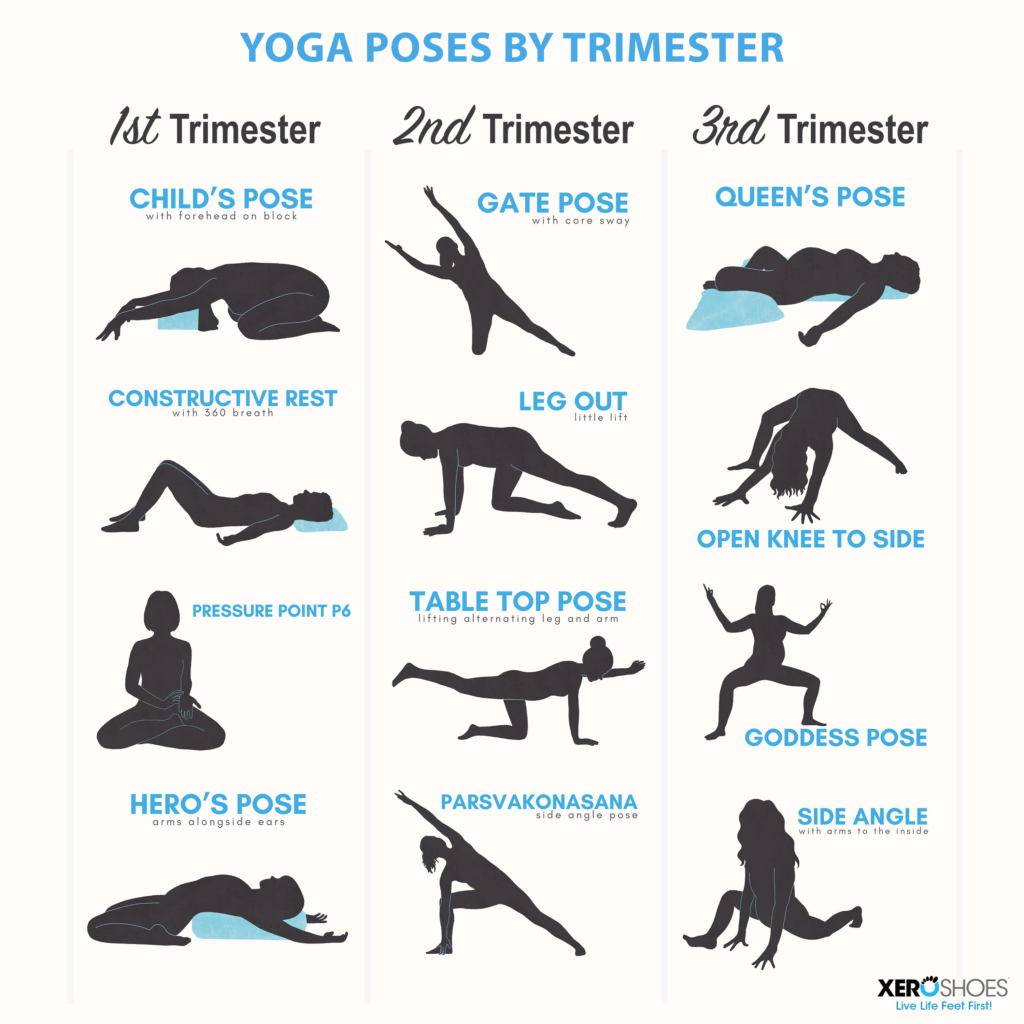
Lauren Sacks

Lauren is the co-founder of Whole Mama Yoga, a health and wellness brand supporting women and birth parents through yoga, and author of “Whole Mama Yoga: Meditation, Mantra, and Movement for Pregnancy and Beyond”.
Sarah Ezrin

Sarah is a highly sought-after yoga educator, award-winning author of “The Yoga of Parenting”, maternal mental health advocate, and content creator based in the Bay Area.
First Trimester
Yoga poses for weeks 1-12
Sarah’s First Trimester Poses
- Child’s Pose with forehead on a block
- Constructive Rest with 360 breath

Sarah’s Advice
“The first trimester is a time of nausea and fatigue. I often say, ‘There’s not a whole lot going on on the outside, but there’s a whole lot happening inside.’ During this time, it’s nice to practice poses that are more restorative, in order to build and sustain energy.”
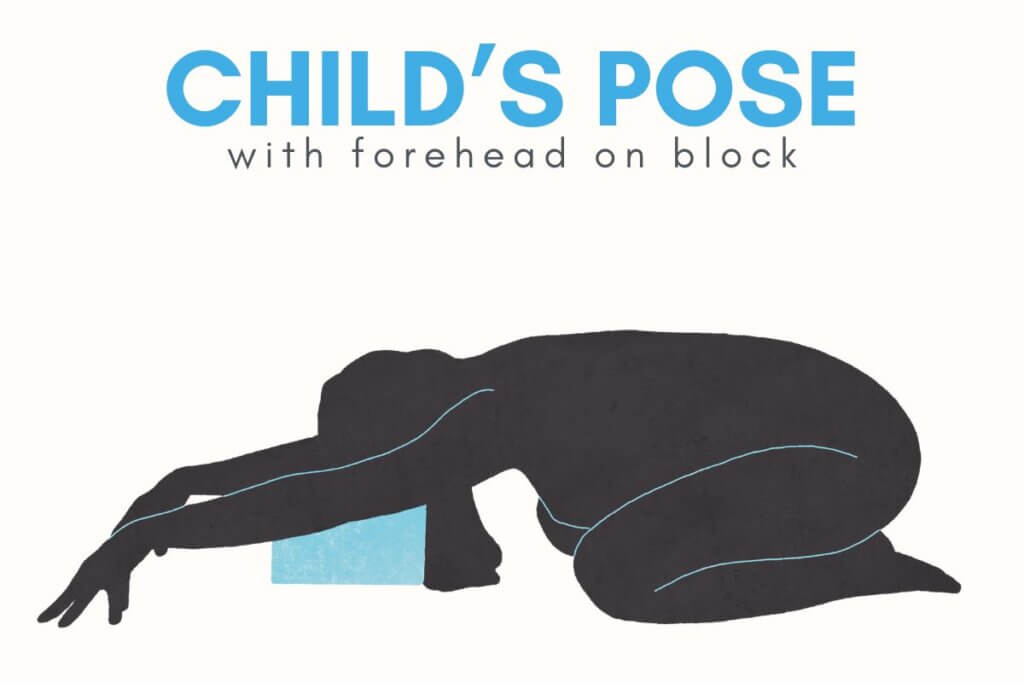 Child’s Pose with forehead on a block
Child’s Pose with forehead on a block
The first trimester is a crash course in learning to listen to our body. Child’s pose can reduce nausea due to the pressure of the thighs against the chest. Having your forehead on a block is a known pressure point for headache reduction and calm. Energetically there is a sense of slowing down and coming to the ground. You are like a seed being planted when you enter pregnancy. Allow yourself to be buried.
Constructive Rest with 360 breath
One of the best things you can do right away is to get to know your breathing patterns. This will support you through pregnancy, birth, postpartum and beyond. Lying on your back with your knees bent and knocking inward is a mild way to feel the movement of your pelvic floor on your inhales (it widens) and exhales (it shortens). Having your back on the floor gives you feedback to ensure you are breathing all the way around your trunk.
Lauren’s First Trimester Poses:
- Pressure point P6
- Hero’s pose, arms alongside ears

Lauren’s Advice
“While I imagine we’d all choose to be in the 30% of people who don’t experience nausea during pregnancy, it seems both anecdotally and statistically to be much more of a probability than not. While yoga is not a panacea for all queasiness, there are a few poses that may be of some help. For the following poses, it’s helpful to have a pillow or bolster.”
Hero’s pose, arms alongside ears
Place a bolster or a couple of pillows toward the back of your yoga mat, and come to kneeling toward the front, bringing your knees close together and separating your heels hip distance apart. Settle your seat in between your heels and lie back over the bolster. If your lower back feels tight or uncomfortable, place an extra blanket or blankets on top of your bolster to support your upper body. Once you have reclined such that your back body is supported by the bolster, try stretching your arms alongside your ears supported by the floor. This position can give your front body additional space and is a yoga pose most often cited for its capacity to relieve nausea.
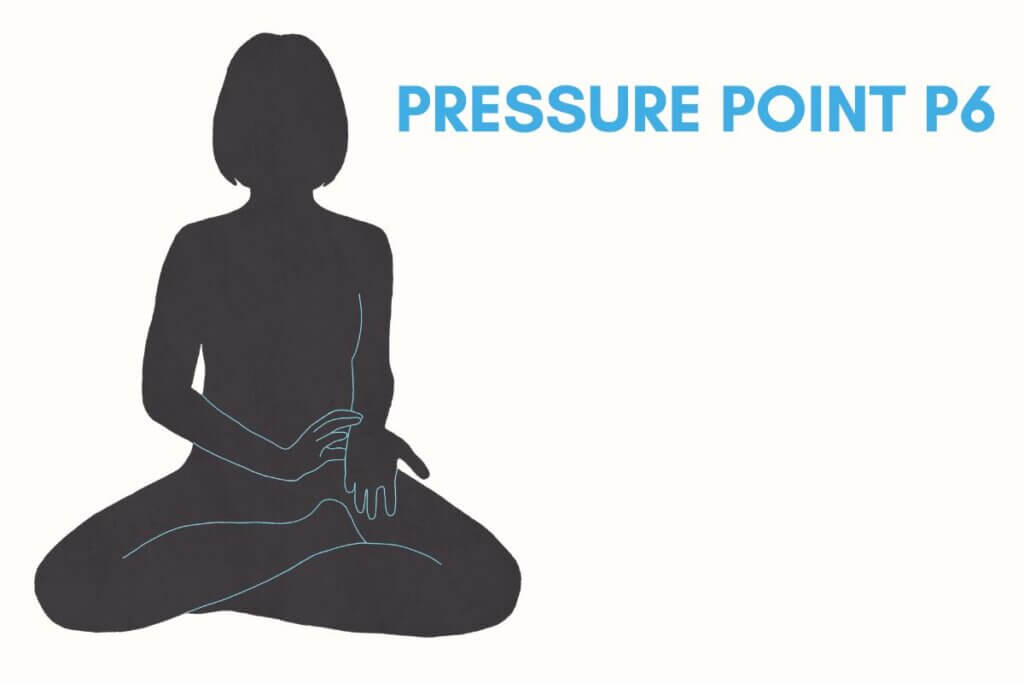 Pressure point P6
Pressure point P6
Come back up to a seated position and place your index, middle, and ring finger of your right hand at the base of your left wrist, so that the index finger is approximately in the center of the width of your forearm. Exert gentle pressure here while you take a few deep breaths in and out through your nose, pausing for a few counts at the top of your inhalation before breathing back out.
Second Trimester
Yoga poses for weeks 13-26
Sarah’s Second Trimester Poses
- Parsvakonasana (Side Angle Pose)
- Table top pose lifting alternating leg and arm
 Sarah’s Advice
Sarah’s Advice
“For many people, the second trimester is when energy returns, although now they are dealing with a growing uterus and rearranging organs. This can mean heartburn and muscle pain. Remaining more upright might feel more intuitive to avoid heartburn. The second trimester is a great time to work on strengthening poses.”
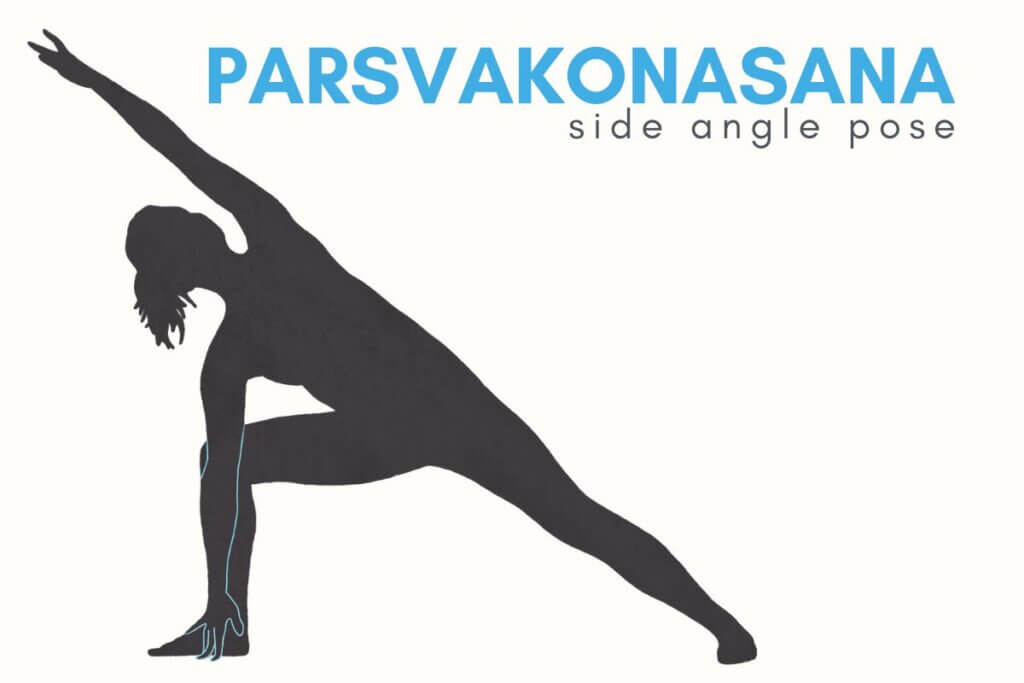 Parsvakonasana (Side Angle Pose)
Parsvakonasana (Side Angle Pose)
This pose is in the Warrior pose family. It strengthens our legs just as it strengthens our perseverance and resolve. This is also a safe pose for cultivating more core support. It requires stability and awareness to hold our spine, particularly if we choose to take our top arm over head.
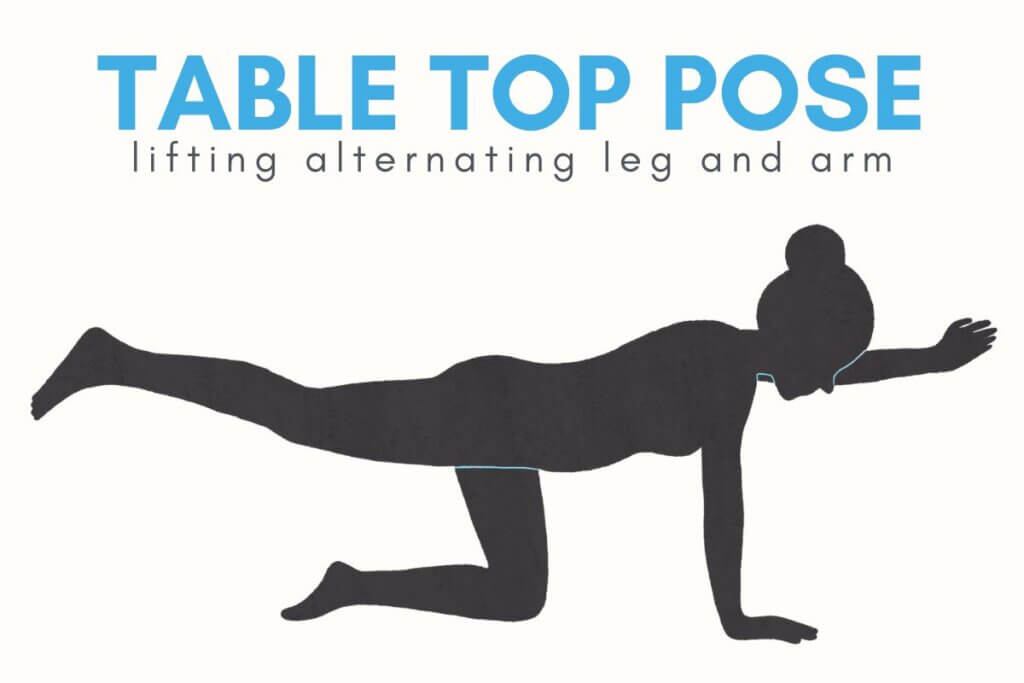 Table top pose lifting alternating leg and arm
Table top pose lifting alternating leg and arm
Most of us picture crunches when we think of core work, but a stable core is less about rounding and more about the ability to hold our middle still as we move our limbs. The belly (well technically uterus) and baby will be growing bigger and bigger. This pose helps to activate the transverse abdominus, which is our deepest core muscle and acts like a corset around our middle.
Lauren’s Second Trimester Poses
- Gate pose, core sway
- Leg out, little lift
 Lauren’s Advice
Lauren’s Advice
“The goal of core work during pregnancy is to connect you to your preexisting core strength so that you remain connected to this space in your body as it transforms over the coming weeks and months.”
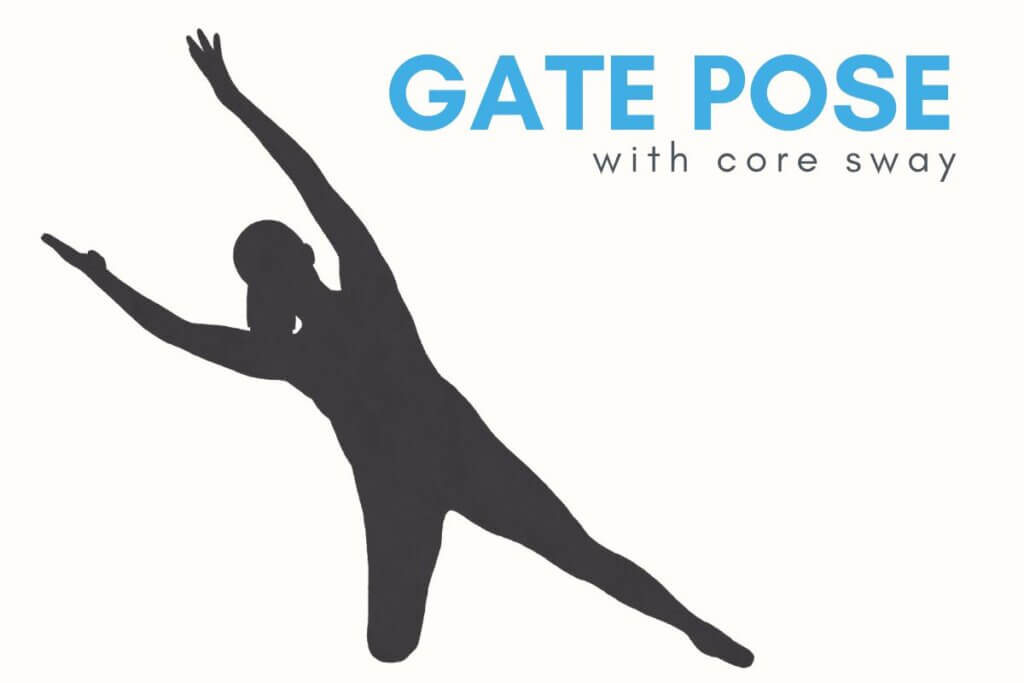 Gate pose, core sway
Gate pose, core sway
Start on your hands and knees. Kickstand your right leg out to the side and then walk your hands back to your knees until you can rise up into this one-knee down kneeling position. Stretch your arms up overhead and, as you breathe out, gently sway from your outstretched right leg to the left. Sway far enough to this side that you notice that you are using the muscles of your side waist and belly to support this movement into the sway and out of it. Inhale to return to center, and then exhale to sway toward your right leg, enjoying the side body stretch. Repeat this two more times, finally swaying toward the right leg to stay. Repeat this again, with your left leg out to the side for the second round.
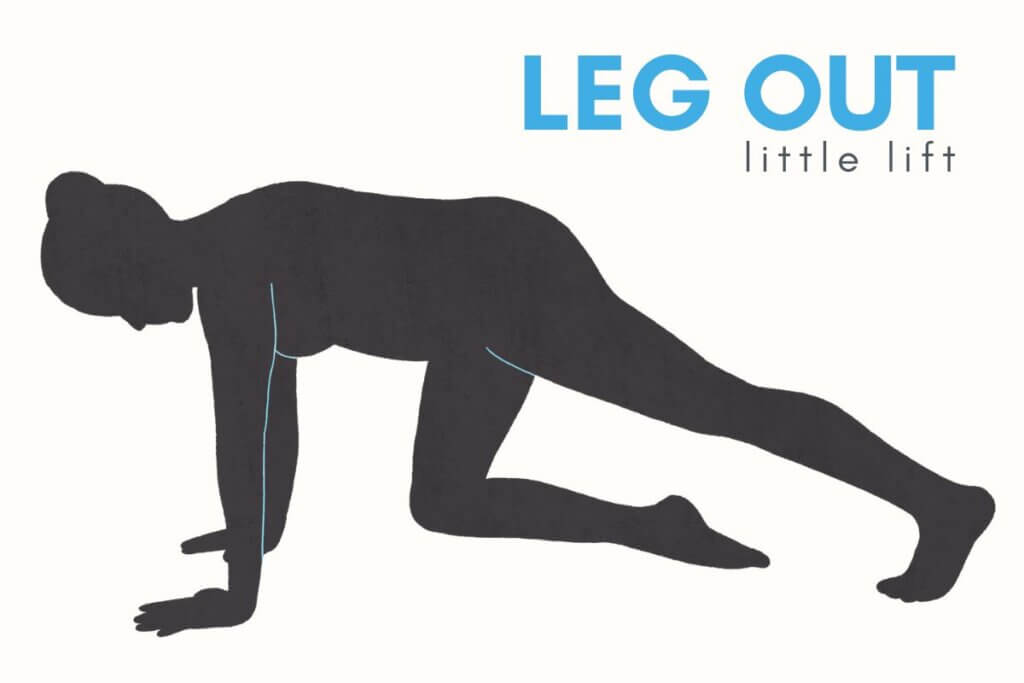 Leg out, little lift
Leg out, little lift
Start on your hands and knees. Extend your right leg long behind you, keeping your toes on the ground to start. Stretch back through your heel a few times, lengthening your calf. Keeping your right leg long, energetically hug your baby up toward your spine. Bring your attention to your left knee and imagine – without actually doing it – that you are about to pull your left knee up and away from the floor. Feel the muscles of your arms, back and legs engage as you gently start to shift your body into that action and lift your left knee up and off of the floor. You may not actually lift the left knee very much at all – the focus should be on remaining engaged in your core. Repeat this on the other side, with your left leg extended long.
Third Trimester
Yoga poses for weeks 27-40
Sarah Third Trimester Poses
- Goddess pose
- Queen’s Pose
 Sarah’s Advice
Sarah’s Advice
“This trimester is aimed at preparing for birth. Even if you are having a planned c-section, your uterus will be contracting leading up to the birth and it’s helpful to prep the body. The baby is growing at a rapid rate and your center of gravity is completely altered. This is also a very important time to focus on gentle core support.”
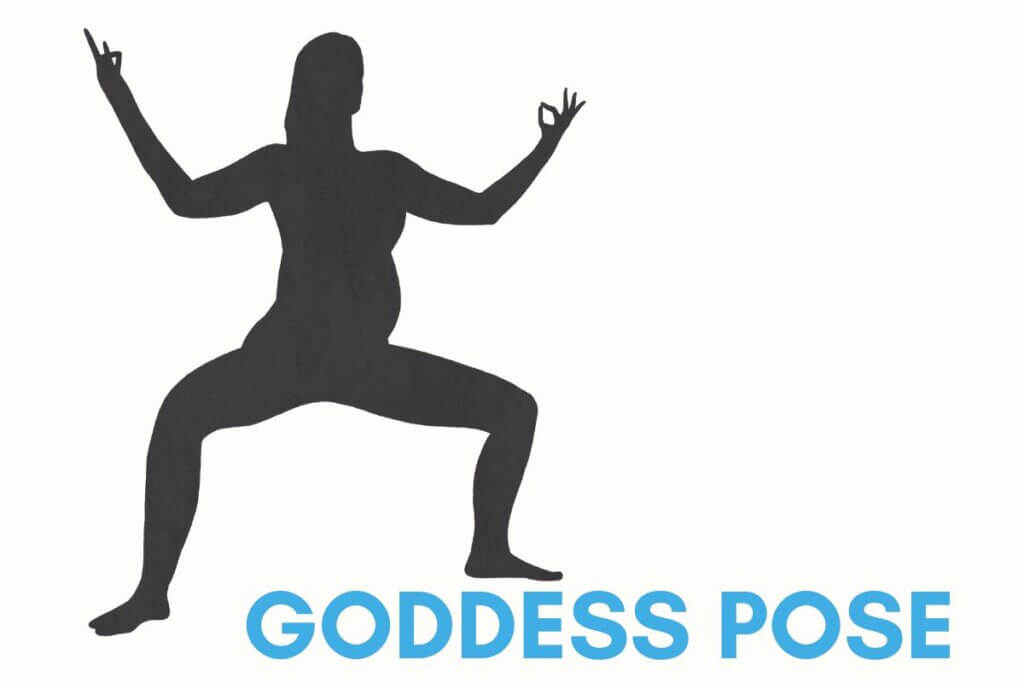 Goddess pose
Goddess pose
As mentioned, hip opening is nice to focus on at this point in the journey. There’s a fierceness to goddess and learning to stay calm in the face of discomfort. Goddess is strengthening for the legs, and if you refer back to the 360 breath from the first trimester, you can learn how to contract and relax the pelvic floor well in this pose.
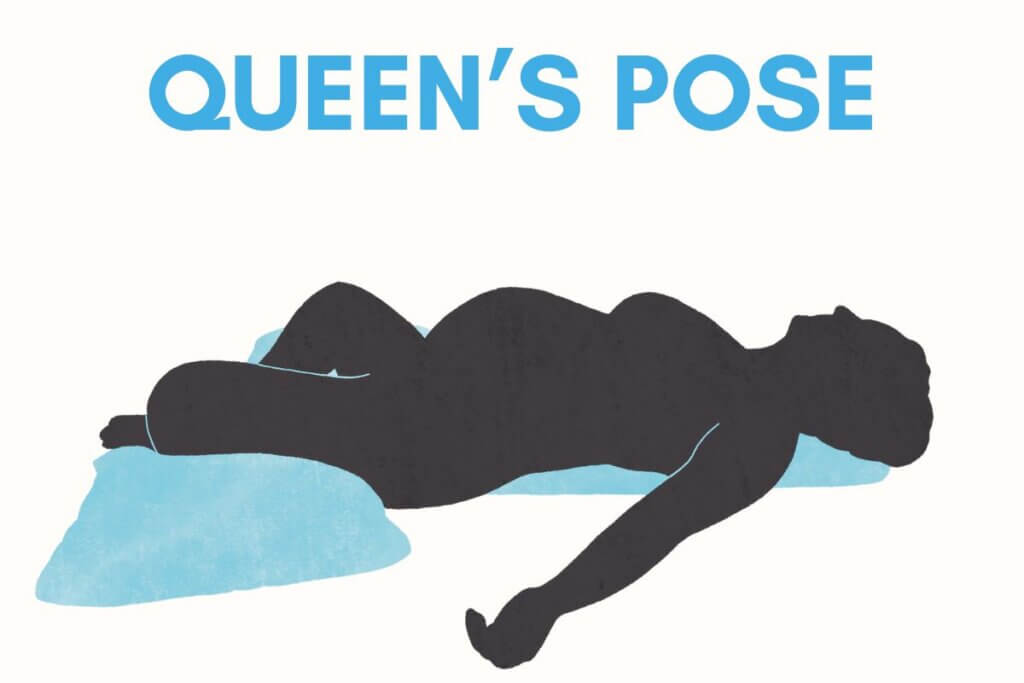 Queen’s Pose
Queen’s Pose
Queen’s pose is a supported backbend with a bolster under the spine and blocks supporting the bolster. If your chin is jutting into the air, prop up your head with blankets or a pillow. As challenging as birth can be, a large part of it is learning to trust our body and let go. This pose not only opens our chest and heart, it helps us practice the necessary softening that comes alongside the warrior’s journey of giving birth.
Lauren’s Third Trimester Poses:
- Open knee to side
- Side angle with arms to the inside
 Lauren’s Advice
Lauren’s Advice
“The lower body needs a lot of love during pregnancy. The increased weight of your upper body places strain on your hips, pelvis, legs and feet. Your pelvis may be less stable, leading to decreased stability in your hips. Side sleeping can add to the strain on the hips, and achiness is not uncommon in the second and third trimesters of pregnancy. Additionally, a growing belly can make it much more challenging to do any sort of forward folding, leading to increased tightness in the hamstrings and, as a result, the lower back. The following poses will provide some relief for your hips and allow your hamstrings a little more movement and length. Having two blocks or the equivalent will be helpful for the poses below.”
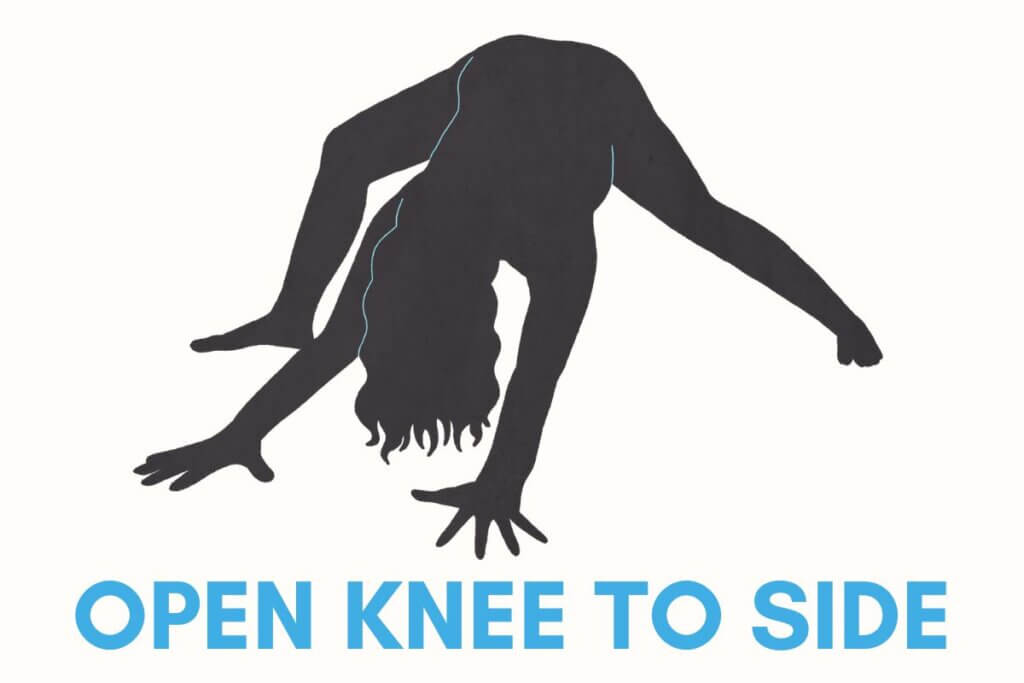 Open knee to side
Open knee to side
Shift your hops forward again to come back into a lunge position with your right knee over your ankle. Begin to open your right knee out to the side, keeping your right foot active and flexed as you do this. Open your knee as far to the right as you‘d like and as far as it feels good for your hip.
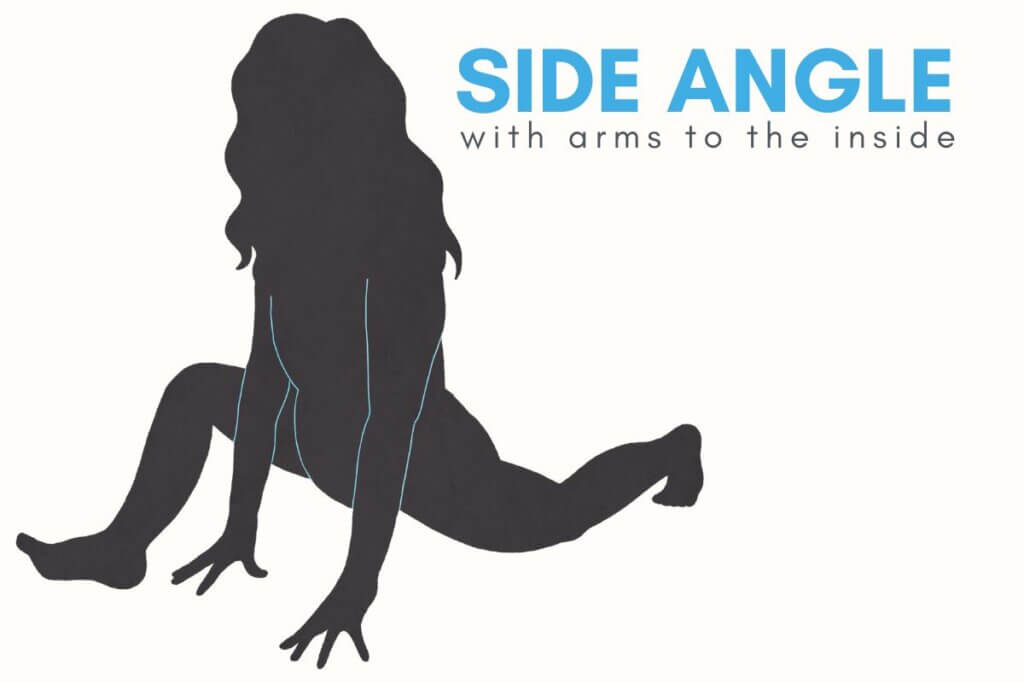 Side angle with arms to the inside
Side angle with arms to the inside
Lower the sole of your right foot back to the ground and lift your left knee off the floor. Drop the sole of your left foot to the floor, with the back edge of your foot either parallel to the back edge of your mat or angled slightly inward, coming into a Warrior 2 position with your legs. Walk your hands to the left of your front foot. Keep your torso elevated, or lower your front body more toward the floor, depending on what is more comfortable for you. Send your hips back in space and extend from your pelvis out and long through both legs. Repeat this sequence on the other side.
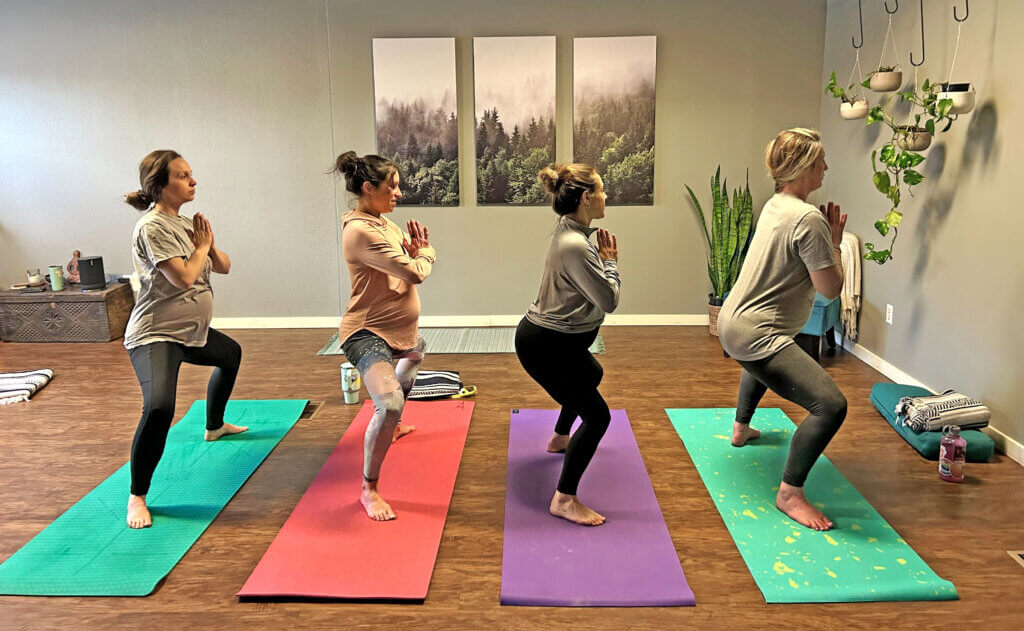
Adding Prenatal Yoga to Your Pregnancy Plan
Yoga can be a great addition to your pregnancy plan. The holistic benefits of yoga can help
you thrive in pregnancy and prepare the body for a healthy birth.
While pregnancy can be a joyful time, it also presents various challenges. Yoga helps expecting parents overcome physical, mental, and emotional challenges that can result during pregnancy. Women can take what is learned on the yoga mat into birth and the ups and downs of parenthood.
Don’t Overlook Foot Strength!

Perhaps the most neglected part of the body during pregnancy is the feet. The changes in body weight affect our center of gravity, creating a massive strain. Pressure on the feet can intensify as your pregnancy progresses, which can lead to swollen ankles, leg cramping, sore knees, foot pain, and problems in the knees and hips.
Instead of doing foot exercises, women can invest in minimalist footwear and get even greater benefits. To improve foot strength, balance, and posture, wearing barefoot shoes is important during your pregnancy. We have a wide range of women’s barefoot shoes and footwear – ranging from running and fitness to casual.
One other consideration is getting slip-on shoes. It gets hard to bend over and tie shoes when your belly gets big. And some women’s feet grow a size depending on their swelling.
Our Contributors
A special thank you to our contributors, Sarah Ezrin and Lauren Sacks!
Lauren Sacks
Lauren is the co-founder of Whole Mama Yoga, a health and wellness brand supporting women and birth parents through yoga, and author of “Whole Mama Yoga: Meditation, Mantra, and Movement for Pregnancy and Beyond”.
Website | Facebook | Instagram | Book
A special thank you to Vivian Rountree for help with the yoga pose images
Sarah Ezrin
Sarah is a highly sought-after yoga educator, award-winning author of “The Yoga of Parenting”, maternal mental health advocate, and content creator based in the Bay Area.
Website | Facebook | Instagram | Book
The content of this post does not constitute and is not intended to be a substitute for professional medical advice, diagnosis or treatment. Always seek the advice of a physician or other qualified health provider with any questions or concerns you may have about your health or a medical condition.

